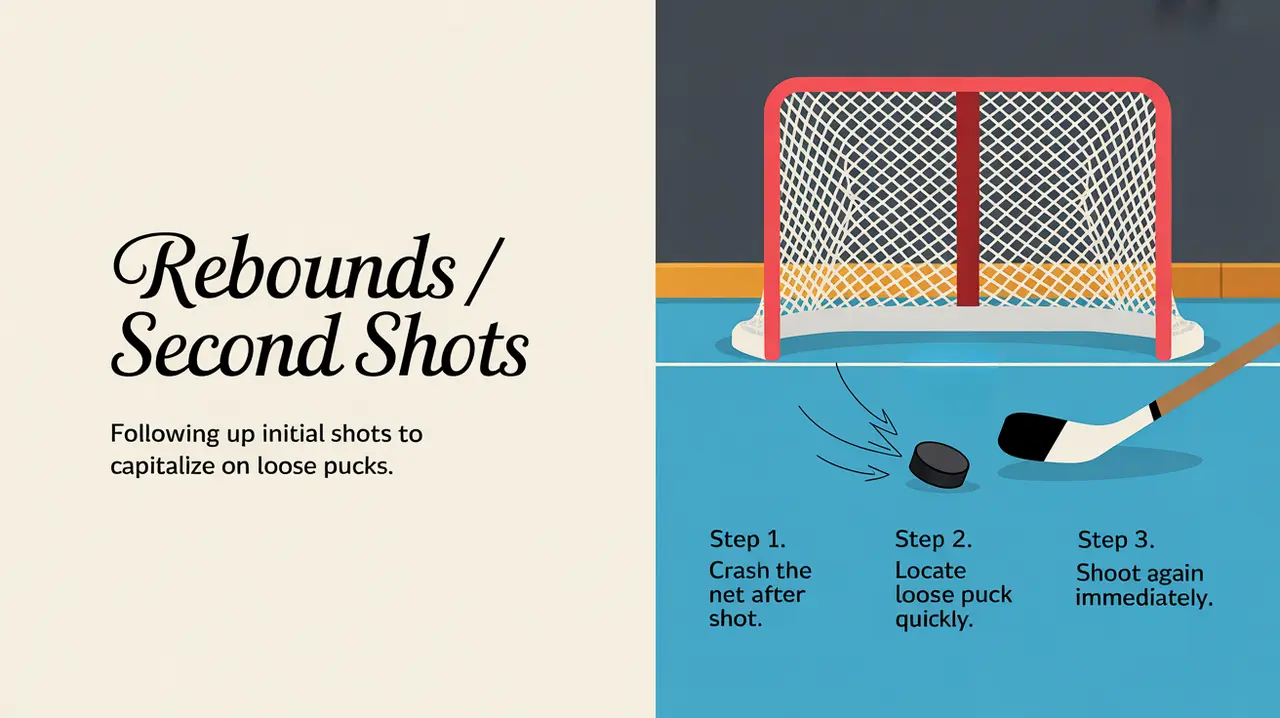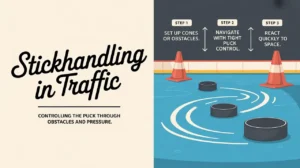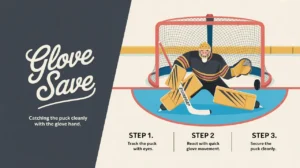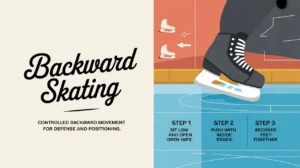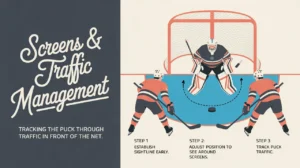Jim’s Intro to Rebounds / Second Shots
Hi folks, Jim here, the only commentator who was once fired as a goalie coach for insisting that everyone should be afforded a second shot.
What are rebounds and second shots?
Rebounds happen when a goalie makes the initial save but can’t control or cover the puck, leaving it loose in front of the net. Second shots are the follow-up attempts taken off those loose pucks. Many goals are scored not on the first shot, but on the rebound that follows.
How does it work?
Capitalizing on rebounds relies on anticipation, positioning, and quick reactions:
- Net-Front Presence: Get to dangerous areas near the crease where rebounds happen.
- Stick on the Ice: Keep your blade ready to pounce the moment the puck pops loose.
- Anticipation: Read the angle of the shot to predict where rebounds might land.
- Quick Hands: Control or shoot immediately. Goalies recover fast.
- Body Position: Stay balanced and strong against defenders boxing out.
- Awareness: Recognize when to shoot right away versus pulling the puck around a sprawling goalie.
How do you make good decisions with it?
- Crash Smartly: Don’t blindly charge the net. Track the puck and arrive under control.
- Shoot Low for Rebounds: If you’re the shooter, low shots to the pads often generate second chances.
- Be Patient Under Pressure: A half-second delay to lift the puck can beat a scrambling goalie.
- Read Defensive Coverage: Know where defenders are to avoid getting tied up.
- Secure Possession if Needed: Sometimes the best second shot is a quick reset pass if the lane closes.
How do you master it?
Mastering rebounds and second shots takes net-front drills and reaction training. Players practice tracking pucks off pads, jamming rebounds in traffic, and reacting to unpredictable bounces. Quick decision-making and stick positioning are key.
What does it look like when done right?
A great rebound play looks instinctive and explosive. The puck hits the goalie, drops loose, and the attacker is already there, firing it home before anyone else reacts.
Commentator’s Corner
Jim’s Take
Great rebound scorers have a sixth sense. They’re like predators circling the crease, waiting for their moment.
Parent Tip
Encourage players to stay engaged after their shots. Teaching players to “follow up” builds scoring instincts.
Player Tip
Crash the net under control, keep your stick down, and be ready to react. The puck often rewards the player who’s prepared.
A Final Thought
Rebounds and second shots are where hustle meets opportunity. Master this skill, and you’ll score the kinds of goals that win tight games when finesse alone isn’t enough.

